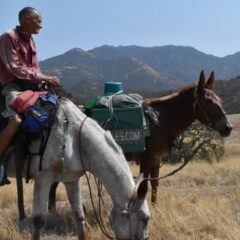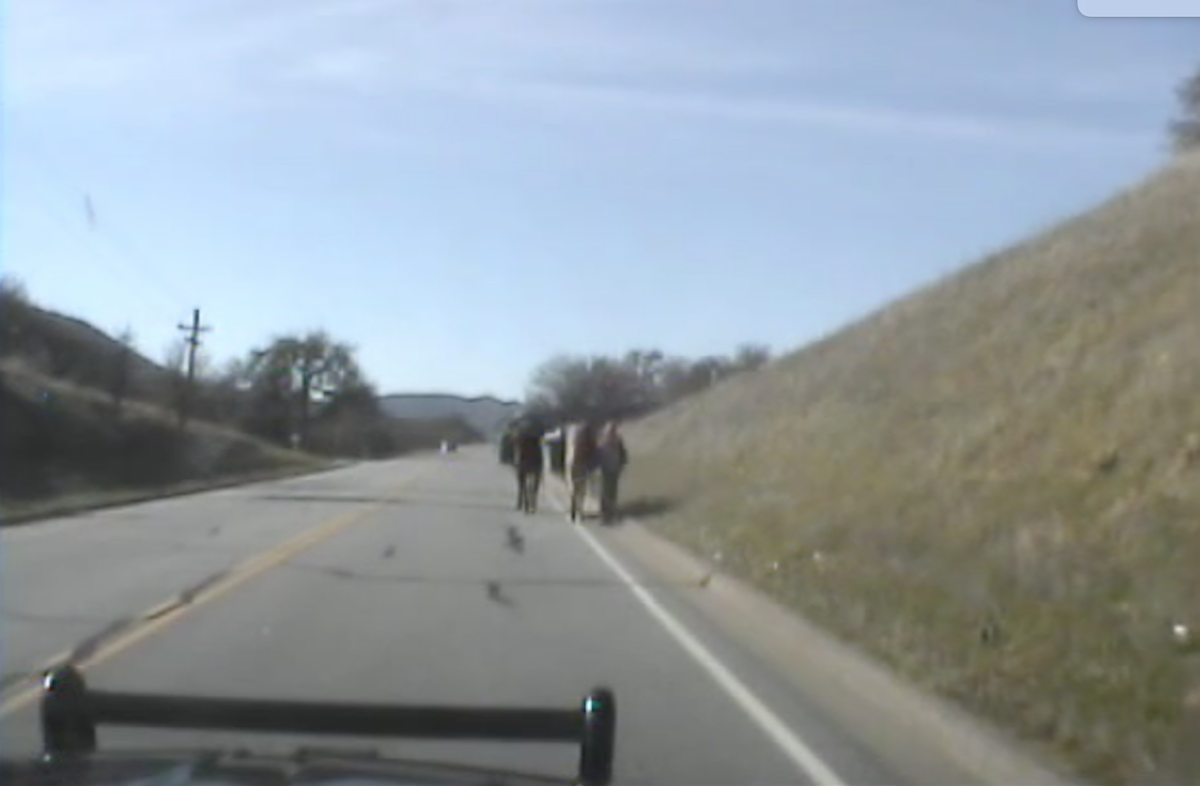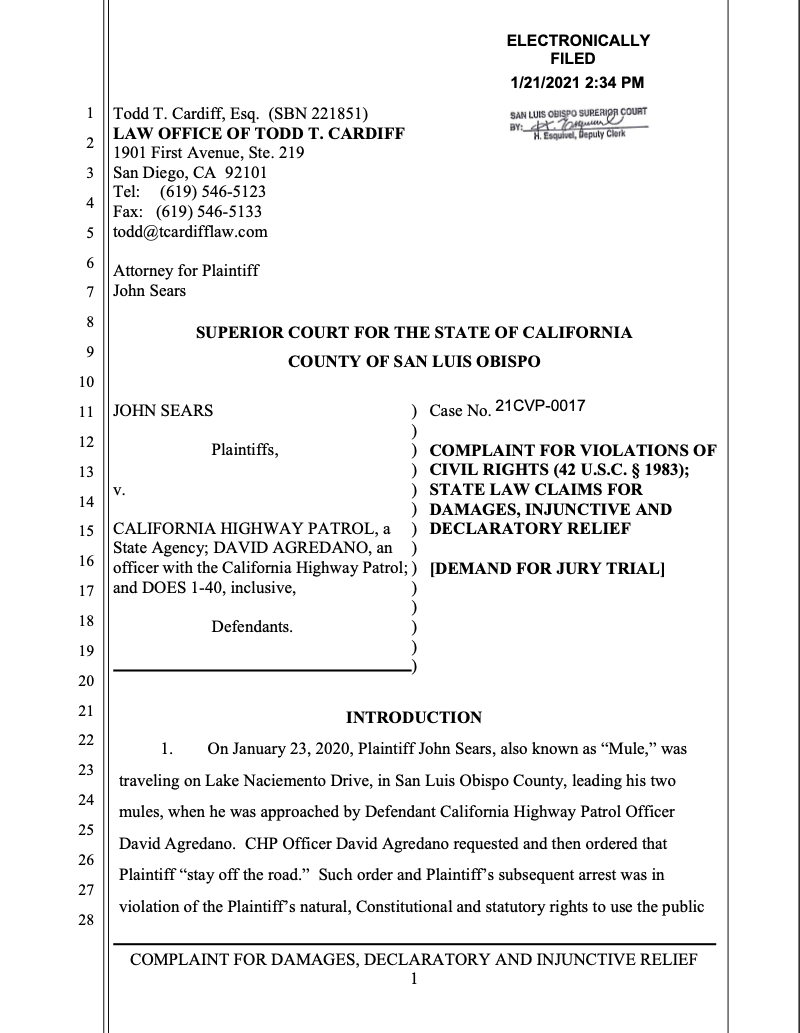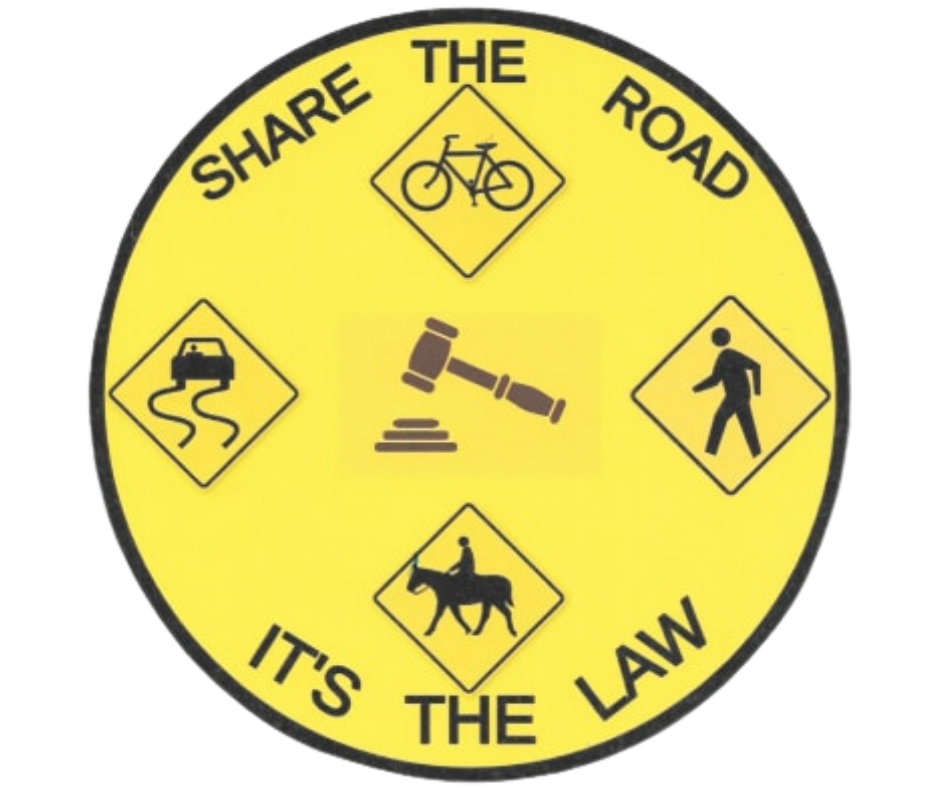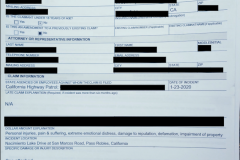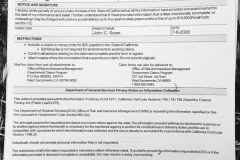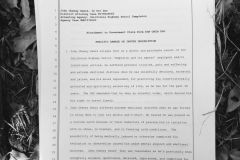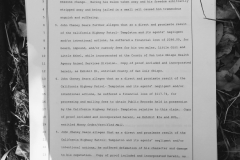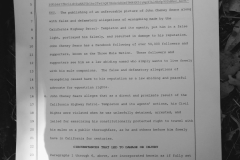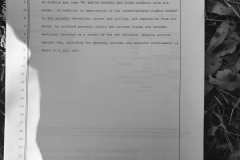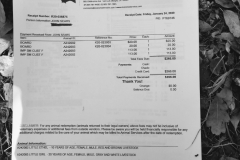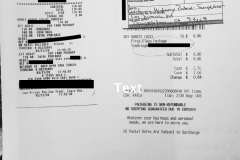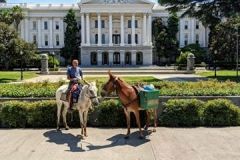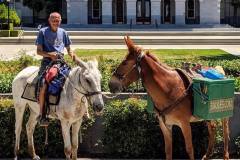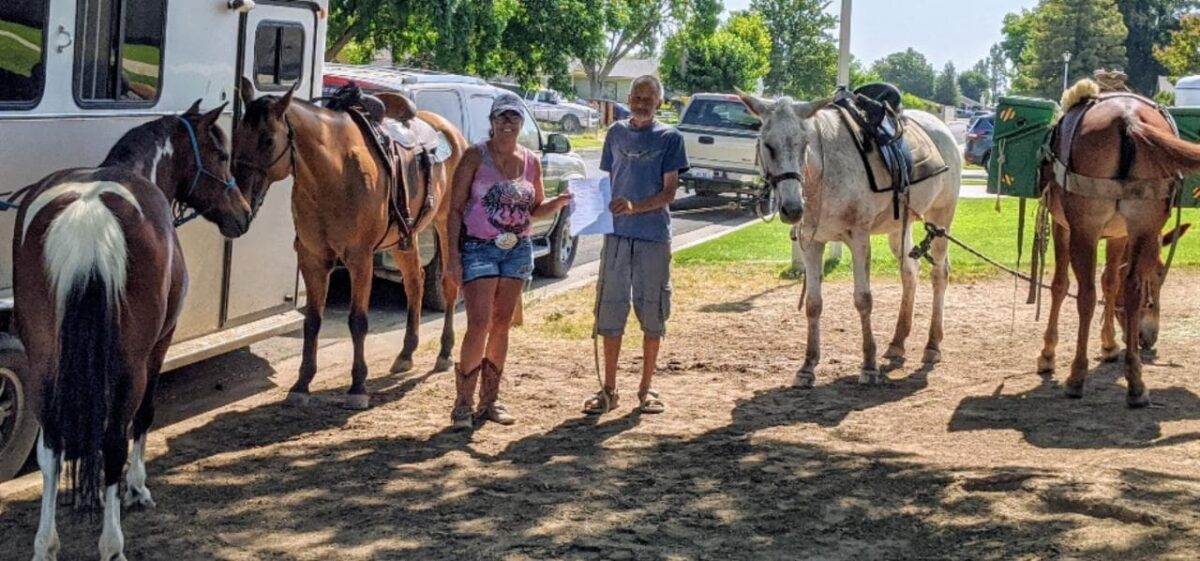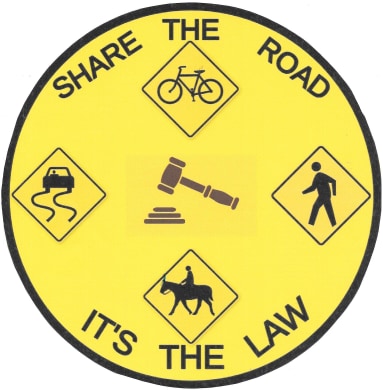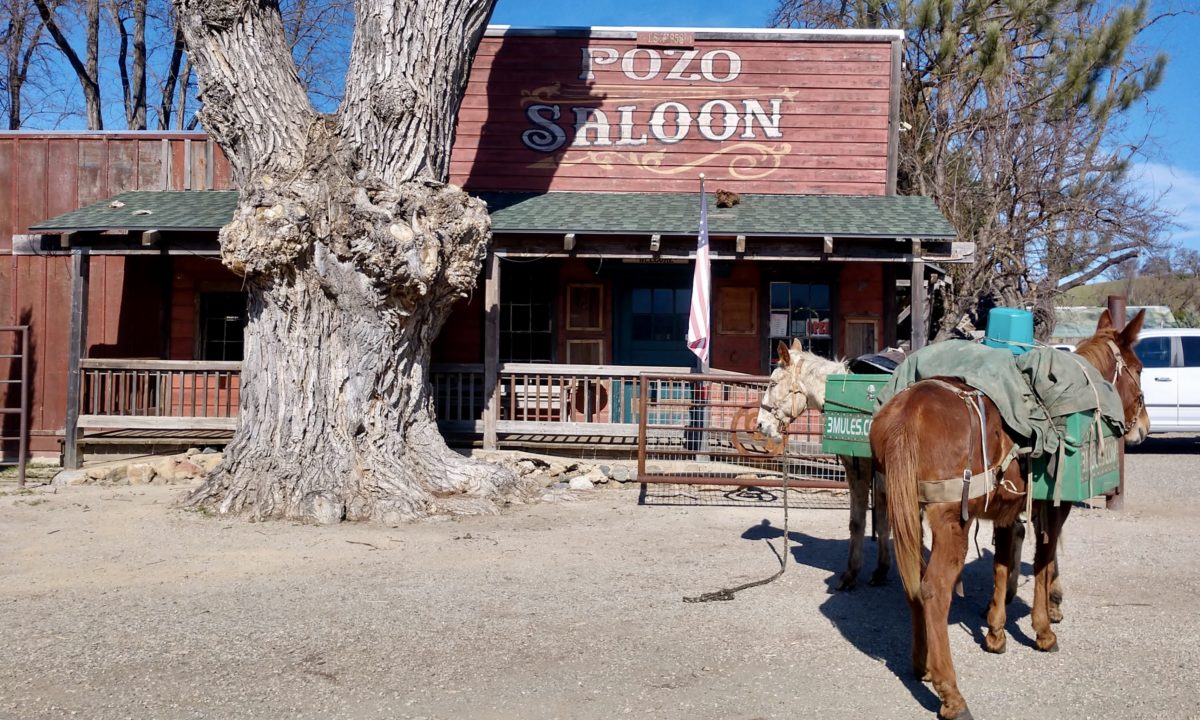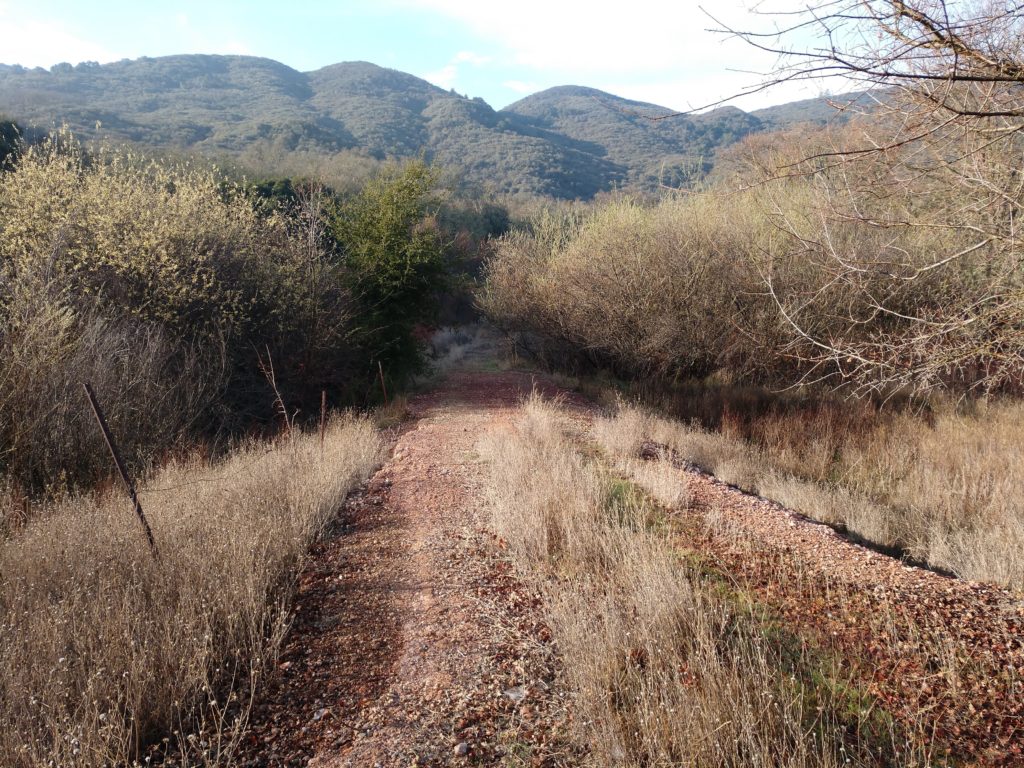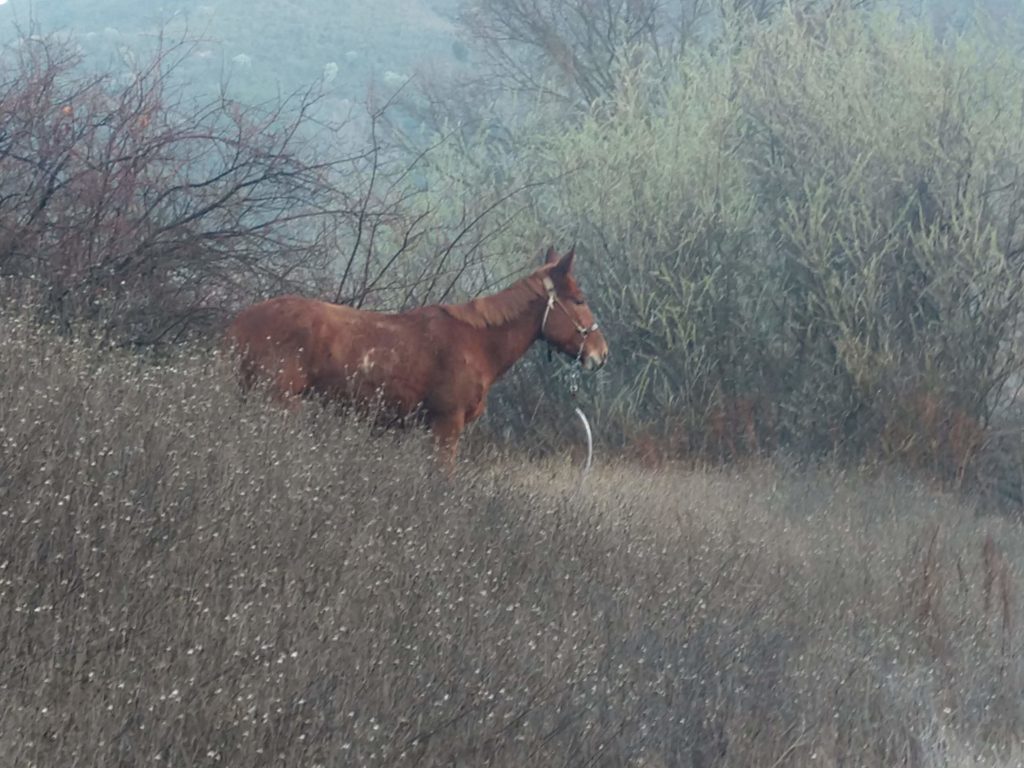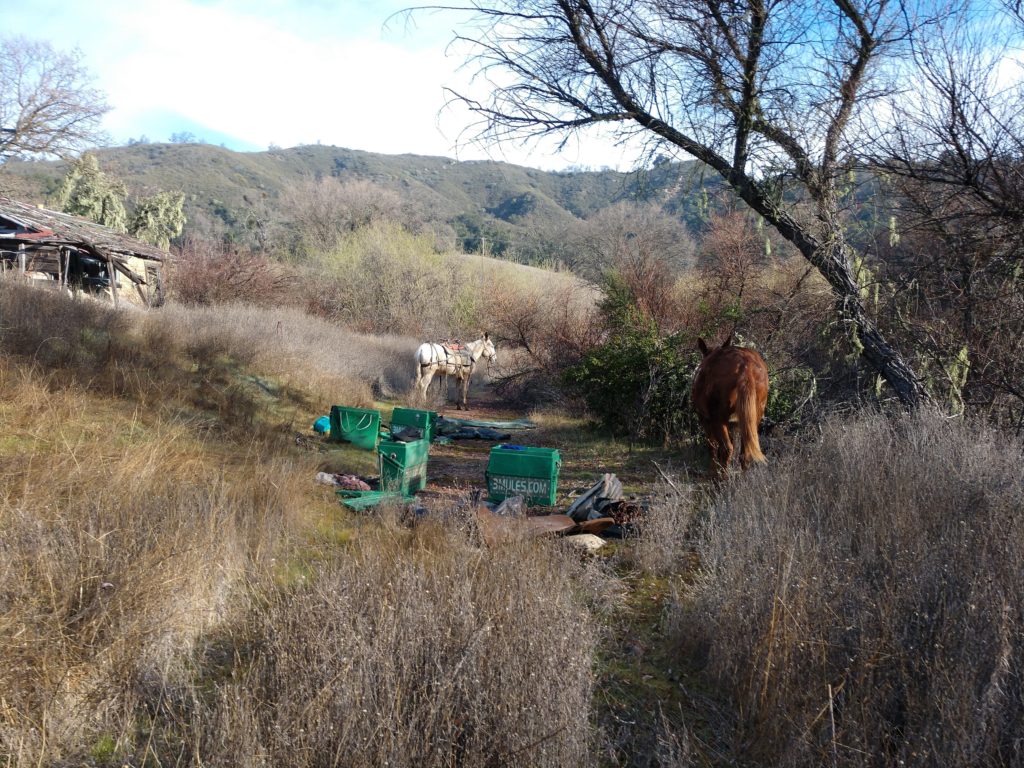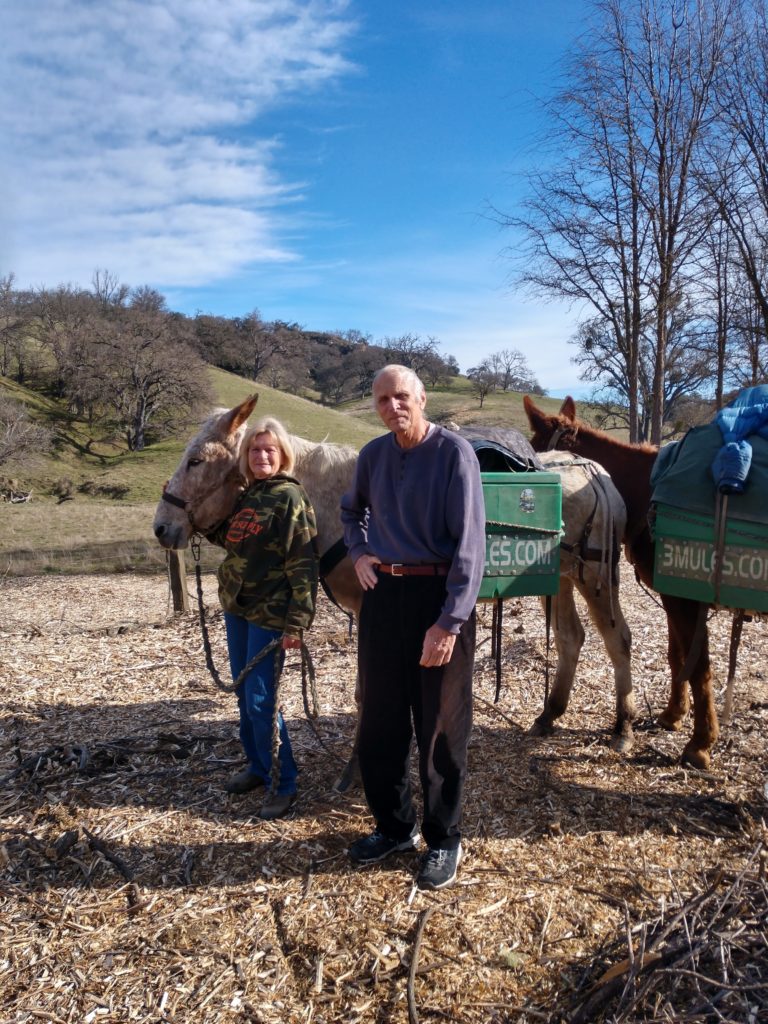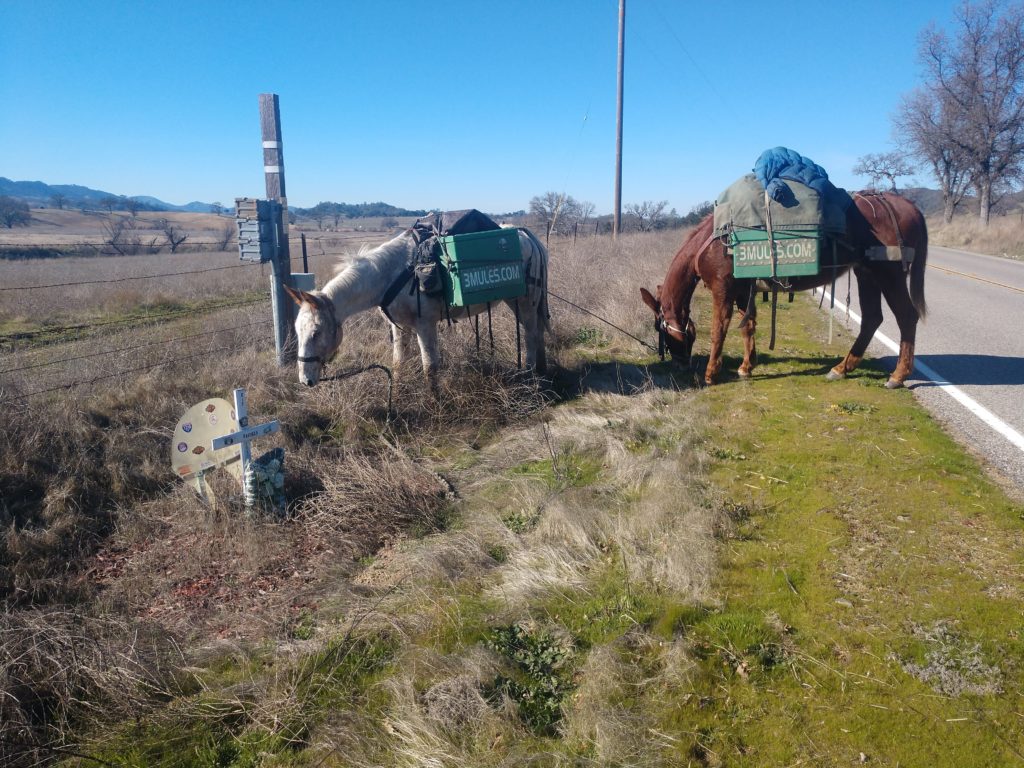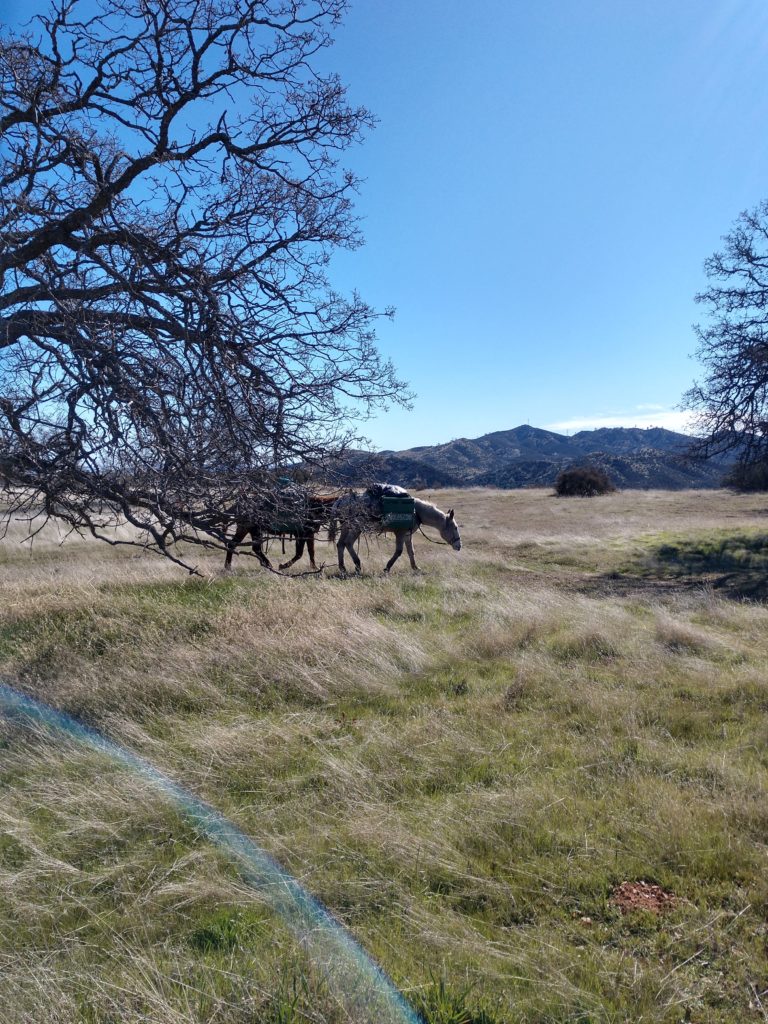On January 23, 2020, the Mules were arrested by the California Highway Patrol (CHP) and charged with the failure to obey a lawful order. The San Luis Obispo County District Attorney decided to drop the case and not file charges.
The Mules have subsequently filed a lawsuit, Mules vs State of California / CHP claiming our arrest to be unlawful. This case is now in on-going litigation.
The Mules filed a public records request and have obtained the arresting officer’s Summary Incident Report. The report consists of six pages.
The Mules will be posting a series of rebuttals and comments to the contents of this report.
The following is the first segment in a series of responses to this report.
CHP Officer Narrative: I was on duty in a marked CHP patrol vehicle and was in full and distinct CHP uniform. At approximately 1128 hours, I received a call from CHP dispatch of an individual walking two mules eastbound in the westbound lane of Nacimiento Lake Drive from Chimney Rock Road. I responded to the area from US 101 at San Marcos Road and arrived with the individual at approximately 1155 hours. I could see a white male walking eastbound on the westbound shoulder pulling two mules.
Mule Rebuttal: I was not “pulling” the mules. I was leading the mules. They were walking behind me willingly at approximately the same speed as which I was walking. “Pulling” infers force. There was no force involved.
What it looks like leading the mules versus pulling the mules.
CHP Officer Narrative: Both mules were wearing packs and walking in the westbound lane and were blocking approximately half of the traffic lane.
Mule Rebuttal: We weren’t “blocking” the traffic lane. Blocking infers we were stationary with the intent of preventing forward motion of something in motion. We were not stationary. We were walking at approximately 2-3 miles per hours in a forward motion on the side of the road.
CHP Officer Narrative: I pulled alongside in the opposing lane and rolled down my passenger side window to make my first contact. I greeted the individual and engaged him in conversation. He didn’t acknowledge me and kept on walking eastbound.
Mule Rebuttal: The reason I didn’t acknowledge him was because he basically stopped in the middle of the road with his CHP cruiser, had no warning lights on, and tried to engage me in a conversation with traffic moving at high speed in both directions unaware of the dangerous hazard he was creating. I was not going to subject myself and my mules to that danger by stopping and engaging the officer in conversation.
CHP Officer Narrative: I drove forward, made a U-turn and was now parallel alongside him in the eastbound lane. I called out to him for my second contact. I told him that he can’t be blocking the traffic lane.
Mule Rebuttal: Once again, he uses the word “blocking.” Blocking infers setting up a stationary road block to prevent anybody from getting by. We were not doing that. We were walking from 2 to 3 miles per hour moving forward down the side of the road.
CHP Officer Narrative: He yelled back at me saying, “How do you know I was in the lane? Do you have any god damn proof?” I activated my rear warning lights as traffic began to build up behind me.
Mule Rebuttal: This was the first time the officer used his warning lights to notify traffic of his stationary position on the highway (blocking traffic) and the reduction of their speed would be necessary.
CHP Officer Narrative: I informed him that passing motorists have been calling him in as a traffic hazard
Mule Rebuttal: The motorists are the traffic hazard for refusing to obey the law and share the road with myself and mules as we were walking on the side of the road. They were the ones who were the traffic hazard. They had an absolute choice: obey the law, slow down, and stop if necessary, so that we could all pass each other safely. Or, refuse to do that and pass us at high speed, swerve out into the opposing lane to get by as fast as possible before they hit another car coming in the opposite direction. They made that choice. Nobody forced them to make that choice. Certainly not the Mules.
CHP Officer Narrative: and I told him to stay off the road.
Mule Rebuttal: And once again the CHP officer tells us to stay off the road. Telling myself and my mules to stay off the road was not a lawful order, but just the opposite. It was an unlawful order as we had the right to walk on Naciemento Lake Road.
CHP Officer Narrative: The individual began using a tirade of insults.
Mule Rebuttal: Well, I don’t know if it was a tirade of insults, but I wasn’t very happy with the way the officer was handling the situation.
CHP Officer Narrative: I could see that the mules were now on a wide, flat shoulder and were out of harm’s way. With traffic building up behind me, I advised him to stay out of the lane and I left the scene.
Mule Rebuttal: Whenever there is room, we will always relent and go as far away from the lane of traffic as possible. That is a given. Many many times on these rural roads in California that option is not available. We have no choice but to walk in the lane of traffic. Walk on the road. We have the right to be doing so. The motorist must share that road. The road does not belong exclusively to a high speed machine called the automobile.
CHP Officer Narrative: At 1222 hours, I received a second call from CHP dispatch of the same individual blocking the traffic lane with two mules.
Mule Rebuttal: Once again, he uses the word “blocking.” We weren’t blocking anybody. We were walking 2-3 mph on the side of the roading heading south towards Paso Robles.
CHP Officer Narrative: I waited for CHP unit 9-1, Officer A to assist me with this incident. In the meantime, two witnesses came to my location and advised me of the dangerous traffic hazard the mules were causing.
Mule Rebuttal: The two motorists complaining about the mules being a dangerous traffic hazard for being on the road demonstrates the total misunderstanding by the motoring public of equestrian rights to use that road. It also demonstrates the negligence of the state of California, CalTrans, and CHP to properly inform the motoring public of their obligation under the state vehicle code to share the road. If the officer knew the law, he would have informed them of their obligation under the state vehicle code to yield and share the road instead of using their complaints of us being a hazard to justify our arrests.
CHP Officer Narrative: Officer A and I drove out onto Nacimiento Lake Drive and I made contact with the individual for a third time. I could see the subject walked eastbound on the westbound shoulder with the two mules in the westbound lane.
Mule Rebuttal: The CHP Pedestrian Tip Card states that pedestrians should walk facing traffic when there is no sidewalk and you have to walk on the road.

Mule Rebuttal: The Mules when walking these rural roads that have posted speed limits that far exceed their ability to safely accommodate all legal users, find ourselves many times crossing back and forth on the road to get on the side that provides ourselves the most room and safety for ourselves and the motorists passing us.
CHP Officer Narrative: The shoulder was wide enough that they all could have walked single file, posing less of a hazard, had the subject made the choice to do so. I recognize this to be extremely dangerous and his continued refusal to comply and walk he and the mules single file on the shoulder posed a hazardous situation to the subject, the mules, and the motoring public.
Mule Rebuttal: If I was to walk single file on that narrow road with very little room for the high speed automobile to get by us without side swiping us, it would be a big mistake. When I recognize the extreme danger of allowing a high speed automobile to what I call “thread the needle” going by us at break neck speeds, it is extremely dangerous for ourselves, the motorist, and the automobiles in the opposing lane. So when I find myself in this situation and I do many times, especially when crossing bridges, I literally get out in the lane of traffic because there is no place else to be and stop the motorist, jump up and down, wave my arms, and make sure the motorist knows that they must slow down. I literally have to force them to do so. They always get by us safely and nobody gets into a bloody wreck.
CHP Officer Narrative: I positioned my patrol vehicle blocking the narrow shoulder and exited to make contact. Officer A positioned his patrol vehicle in the lane to the rear of mine with the overhead emergency lights activated. He exited his vehicle and stood in the westbound lane to flag and warn oncoming traffic. The subject was irate and agitated saying that this was a public thoroughfare and he had the right to be there.
Mule Rebuttal: Of course I was agitated and irate. If a motorist was stopped by a CHP officer and told that he had no right to be in his car and driving down the road, what kind of behavior would you expect from that motorist?
CHP Officer Narrative: I explained that I was concerned for his safety. He said that traffic needs to slow down, if I was truly concerned about his safety.
Mule Rebuttal: Yes that’s exactly what the officer should have been involved in is slowing traffic down for the safety of myself, the mules, and the ignorant motorists.
CHP Officer Narrative: I told him that I witnessed his mules walking two abreast in the lane. I told him I wanted to make this as easy as possible and I asked him for identification. He said I knew who he was and to look at his website. He refused to give me any form of identification. I tried to reason with him and asked for his ID. He went to his saddlebag and produced a California ID card identifying him as John Cheney Sears. Mr. Sears went on to say that the speed limit should be 25 mph, people need to share the road, and that the CHP has him on surveillance.
CHP Officer Narrative: I asked him to work with me and stay out of the traffic lane.
Mule Rebuttal: Once again it was impossible to stay out of the lane of traffic due to the lack of anywhere else to be.
CHP Officer Narrative: He stated that he would not do that.
Mule Rebuttal: Well of course I didn’t do that, I couldn’t do that.
CHP Officer Narrative: I gave him a lawful order three times and told him that he may receive a ticket or worse, go to jail. The legal order was based upon section 21954(a) VC, Pedestrian Outside a Crosswalk.
Mule Rebuttal: Nacimiento Lake Road (G14) is a rural area. There are no cross walks any where. When you have to go across that road because of blind curves and get to the safer side for the safety of myself, the mules, and the ignorant motorist, that’s what we do. And we have the right to do that. And there are no cross walks on that road.
CHP Officer Narrative: Mr. Sears stated that if that happened, I would be opening up a can of worms. I told him that I didn’t want to take it to the next level. He said, “What happens, happens.”
Mule Rebuttal: The danger to the motoring public continues because of the reckless driving of that public. They make the choice to drive recklessly at high speeds. We don’t force them to do that. That is their choice.
CHP Officer Narrative: Officer A and I positioned our patrol vehicles at the intersection of Nacimiento Lake Drive and San Marcos Road. With the belief that the danger to the motoring public would most likely continue, I drove out to Mr. Sears’ location with the MVARS camera activated. Once again, I was able to see Mr. Sears walking his mules in the eastbound traffic lane, rather than on the shoulder, in defiance of my lawful order, a violation of California Vehicle Code section 2800(a).
Mule Rebuttal: The order was not lawful. We have the right to be on the road. We have the right to use it. And there was no place else to go. As I stated previously, if there was, we would be there. Anytime there is enough room for us to remove ourselves as far as possible from the high speed motorist, we do so. But in many cases, especially on that road, there isn’t. The order was not lawful. You can’t give an order that is impossible to comply with and call it lawful.
CHP Officer Narrative: I made a U-turn and activated my red lights to warn approaching traffic. Six vehicles including a Semi-tractor pulling a low boy trailer with heavy equipment had to utilize the opposing lane to get around Mr. Sears and his mules.
Mule Rebuttal: Well why did he have to do that? Because the semi-tractor refused to slow down and stop if necessary so we could all safely pass each other. The semi-tractor was blatantly breaking the law in front of the CHP officer and the CHP officer did nothing to address that.
CHP Officer Narrative: Had Mr. Sears walked the Mules single file as directed, there would have been much less of a hazard presented.
Mule Rebuttal: Far to the contrary, once again, there is extreme danger had we been walking single file. The semi-tractor would have side swiped us.
CHP Officer Narrative: I returned to the San Marcos intersection and waited for Mr. Sears to arrive.
CHP Officer Narrative: The situation posed an extreme danger to Mr. Sears, the mules, and the motoring public. Nacimiento Lake Drive is a winding roadway with ascending and descending elevations. The shoulders are narrow offering little room for a horse and even less for a vehicle. Mr. Sears was previously in an area of blind curves when CHP dispatch first received calls of him blocking the eastbound traffic lane. Mr. Sears was now about to travel east of San Marcos Road where the roadway is similarly dangerous.
Mule Rebuttal: CHP officer did not offer any assistance in alternate routes, nor did the officer offer a trailer ride to get to Paso Robles. We had no cell reception to call anybody. In the CHP dashcam video, the officer states that he has no cell reception either yet he was able to call for a trailer to take us to jail in San Luis Obispo but not a tralier ride to Paso Robles. The only way for us to physically get out of the area was to continue walking as we could not sprout wings and fly away, which is what we told the officer as well. CHP Officer turned his back on us and walked away as seen in the dashcam video.
CHP Officer Narrative: At 1312 hours, I notified my supervisor/Sergeant and advised him of the ongoing situation involving Mr. Sears, the mules in the lane, and the defiance of a lawful order. I explained that if the dangerous situation continued, I may have no other choice but to arrest Mr. Sears. Sergeant concurred with me.
Upon Mr. Sears’ arrival, I exited my patrol vehicle and detained Mr. Sears. Officer Abel held the mules and I placed Mr. Sears under arrest for disobeying a lawful order, without incident. I advised Mr. Sears of his Miranda Rights which he invoked. Mr. Sears went on to yell that this was an unlawful arrest, we had no right to do this, and we were “fucking cowards.” his two mules were turned over to San Luis Obispo County Animal Services for safe keeping. All of Mr. Sears’ property was taken to the Templeton CHP office for safe keeping. Mr. Sears was transported to the San Luis Obispo County Jail and turned over to jail staff for booking.
Mules Rebuttal: Once again, it was not a lawful order, but just the opposite. The officer and the Sergeant had other choices, such as providing escort, providing a trailer ride to Paso Robles. The Mules could not sprout wings and fly away. If the CHP was able to summon Animal Services for a trailer so quickly, why couldn’t they trailer us past the area they thought was dangerous and drop off us to continue our journey to Paso Robles which was less than five miles way rather than drive us to San Luis Obispo 40 miles away. The CHP had other choices, just as the high speed motorist had a choice to obey the law to slow down and share the road.
